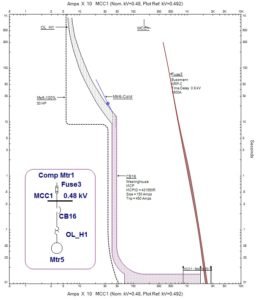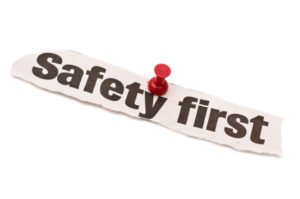How to best use the Power System Study Report

If you have gone through the process of completing the power system study report, or have had an outside consultant provide you a binder with all the deliverables, now the real work begins. Having a power system study completed is not the end: it is the start. The reasons to have a power system study report completed in the first place can vary from getting incident energy values for PPE selection, to future plant expansions.

Use the power system study report to save money and have a reliable facility.
In this article we will outline some of the more common uses of a complete power system study report. We'll also include suggestions about how to approach the recommendations that were included.
Short Circuit Study
Let's start at the beginning with the short circuit study. The first thing we will look at is the type of recommendations that you will be expecting to receive in the report. First there is going to be any equipment that is not rated for the existing short circuit current that is available within the facility. There are a couple of reasons for this to happen: the first is that the equipment was purchased undersized, however the more likely scenario is that there have been system changes. These changes could be either at the utility level - adding additional transmission capacity - or within the facility itself.
Typically the best way to fix these issues is to replace the equipment.
Another output of the short circuit study will be areas that are marginal. This could mean that a change in the system could exceed the fault rating on the affected equipment. For these, investigate the switching scenario that was used, and figure out if there are any additions to the plant planned in the future. A decision will then be made to determine if the equipment should be replaced now, or flagged as an area of concern when there are system configuration changes in the future.
Protection Coordination Study

TCC from an ETAP example file
The protection coordination study will likely include recommendations for areas that are mis-coordinated. With the help of your consultant you can go through the areas of concern and develop a list of what needs to be changed. With proper selective coordination, the system will operate in a predictable manner in the event of a fault or overload.
In a lot of cases it will be easy to change the settings on the relay, or LSI(G) breaker, to solve the coordination problem. If the settings can't be changed with the existing equipment, the protection device will need to be replaced. If the mis-coordination is something that will not affect a large portion of the system, or is the same circuit (a primary fuse and secondary breaker on a transformer) the decision may be to leave the mis-coordination as it is.
Another consideration of selective coordination is the incident energy in the case of an arc flash event. Clearing the fault as quickly as possible will limit the heat energy available, and will reduce the arc flash boundary and PPE required for energized work. These decisions will be simplfied when going through the electrical safety program.
Incident Energy Study
The incident energy study is a critical input to the arc flash analysis, which is a critical portion of the electrical safety program. If you haven't developed an electrical safety program or an arc flash risk analysis, a great way to start one is with an incident energy study in hand. With the incident energy known at all the equipment, you will know the arc flash boundary and can start developing PPE levels for energized work.

The Electrical Safety Program is critical to workplace safety
Arc Flash Risk Analysis
The first step is to develop a risk assessment as associated with the arc flash hazard. Within the company develop a list of the various tasks that will expose workers to an arc flash hazard. From there you can determine what incident energy is considered too high of a risk for energized work, and cross-reference with the incident energy report. You can implement mitigation techniques for any areas that have a high incident energy.
Incident Energy Mitigation Techniques
There are only two methods to lower the incident energy at a bus: one is to lower the time the arc is present before being cleared, and the other is to lower the magnitude of the current. To shorten the time that the arc is present, modifying the protection settings will work well. Sometimes this may mean sacrificing selective coordination, which is a compromise that can be made on a case by case basis.
It is harder to lower the available current. You can add impedance - add inductance or more cable - which is typically not practical, or break up the large motors onto different buses to lessen the back feed current during a fault. Neither of these are very practical, and are typically ignored.
Load Flow Study

A load flow study can help save energy and save money
Finally the load flow study is the place that you can really start to save money. Using the results of the load flow study report, you can see where in the system you may have opportunity to increase efficiency. We've already written about who can leverage a power system study: engineers aren't the only group that can use the load flow study in their everyday work. A couple of examples are how capital projects (power factor correction) and operations (load scheduling) can help your facility save money and pay back the cost of having a study completed in the first place.
Power Factor Correction
By ensuring that the power factor is matched as close to 1 as possible, you system will be operating with the least kW, meaning that you will be paying for the least amount of energy from the utility. The load flow study will determine the best place to install power factor correction capacitors, whether they should be staged or always online.
Load Scheduling
If your facility has a large energy draw, and a lot of motor load, then your power bill will likely be in multiple parts. Each part will have different charges. For example:
- Energy -kWh
- Max Demand - kW with a rolling average
- Power Factor - too much kVAR draw
Conclusion
There are a lot of useful projects that will optimize the operation of your facility: we have only scratched the surface with this article. If you liked this article, feel free to share it. If you let us know, we'll add more articles like this one, about utilizing a power system study at your facility to give your business a competitive edge. Be sure to follow us on Twitter and like our page on Facebook! Main Image SourceIf you like this article and want to hear more sign up for our newsletter at jmkengineering.com/newsletter
0
0
0.000
Congratulations @jmkengineering! You have completed the following achievement on the Hive blockchain and have been rewarded with new badge(s) :
You can view your badges on your board and compare to others on the Ranking
If you no longer want to receive notifications, reply to this comment with the word
STOPDo not miss the last post from @hivebuzz:
Thanks for your contribution to the STEMsocial community. Feel free to join us on discord to get to know the rest of us!
Please consider supporting our funding proposal, approving our witness (@stem.witness) or delegating to the @steemstem account (for some ROI).
Please consider using the STEMsocial app app and including @stemsocial as a beneficiary to get a stronger support.